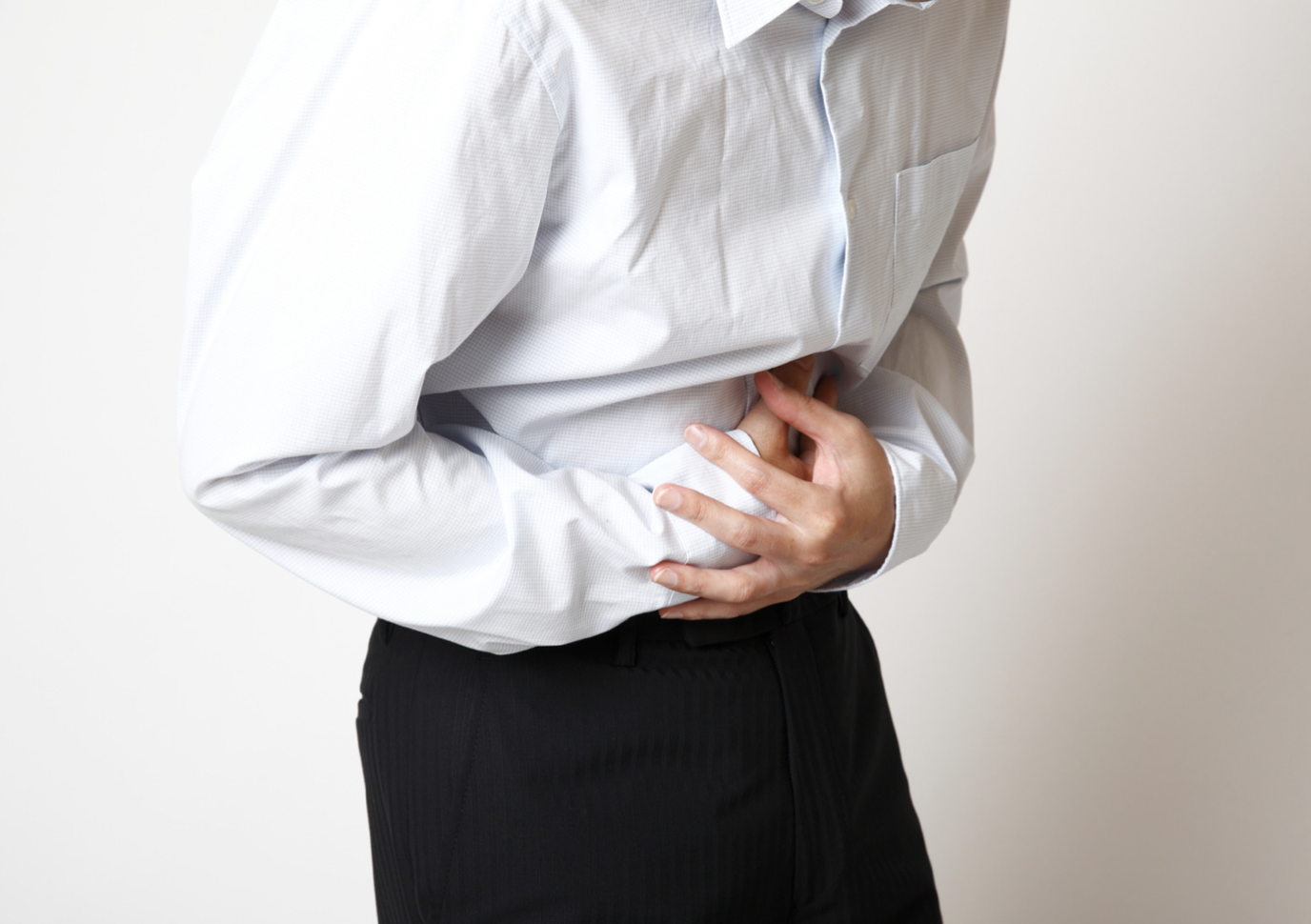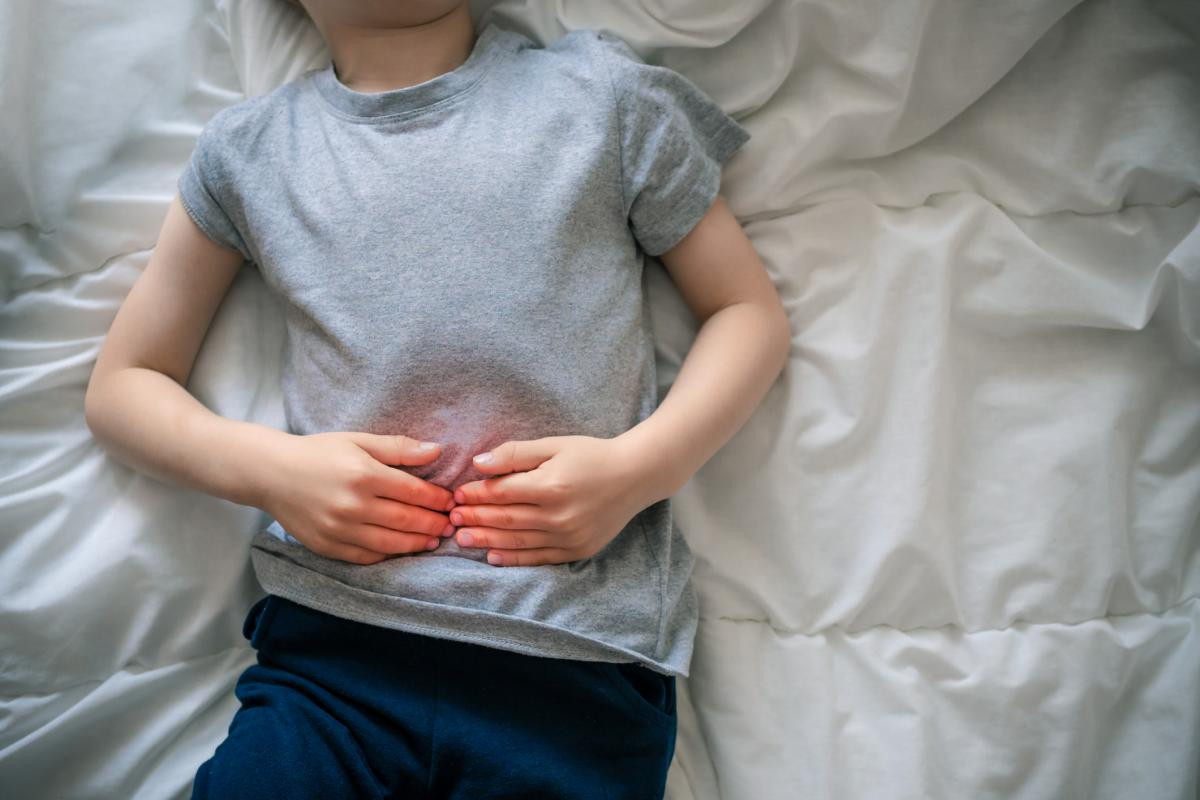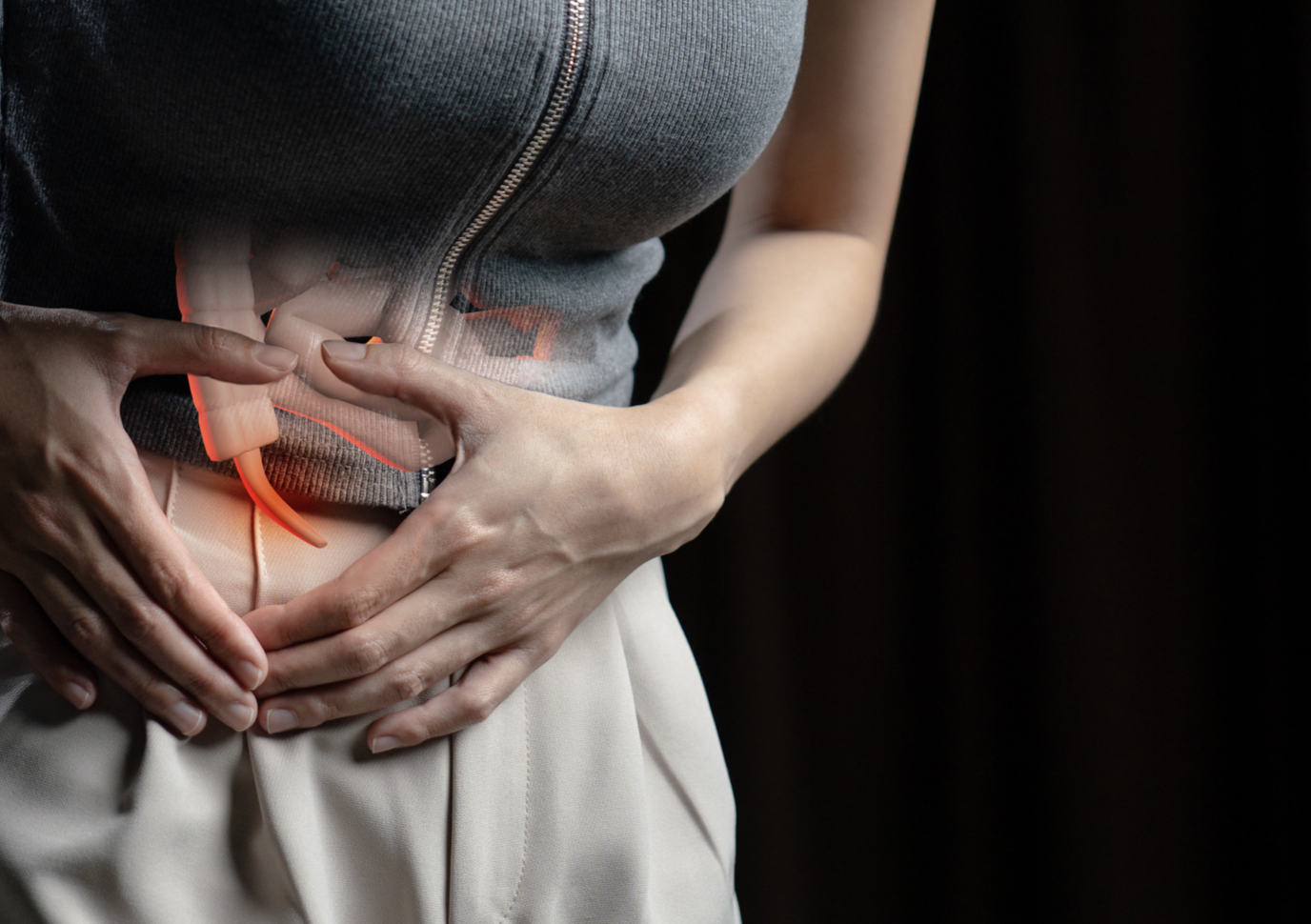Definition
Colic pain is a wave-like pain that follows the peristaltic movement of smooth muscles. This pain is sharp and intermittent, lasting for less than a few hours and quickly worsening in onset.
Colic pain is caused by blockage, inflammation, or infection in hollow organs or ducts in the abdomen, whether it is the small intestine, large intestine, bile duct, kidney, or urinary tract. These hollow organs have smooth muscles that contract continuously and undergo peristaltic movement. The contraction of muscles around the blockage leads to severe pain that is sharp and intermittent following the peristaltic movement.
Causes
The causes of colic pain in adults are varied, with the three most common types being:
- Biliary Colic or Gallstone Colic
This is usually caused by blockage due to gallstones. Gallstones form from the sedimentation of bile, hardening and developing in the gallbladder. The stone can obstruct the bile duct. The smooth muscle layer in the bile duct contracts during peristalsis movements, attempting to move bile from the gallbladder into the small intestine. If there is a gallstone in the bile duct, colic pain will occur when the muscles around the blockage contract. In addition to colic, the blockage of the bile duct can cause inflammation and disorders in the digestive tract.
- Renal colic
About 10% of all people worldwide experience renal colic at some point in their lives. Renal colic occurs suddenly and intermittently, often presenting as severe pain. This type of colic is usually related to kidney stones or urinary tract stones. The intensity of the pain varies depending on the location and size of the stone.
- Intestinal colic
Intestinal colic pain resembles cramping and originates from the small or large intestine being blocked. When the muscles around the blockage contract, pain ensues. Causes of blockage include scar tissue formation at previous surgical sites, inflammation of the intestine, hardened stool, and the presence of cancer or tumors in the intestine.
Risk factor
- Biliary Colic or Gallstone Colic
Biliary colic is caused by gallstones. Gallstones often occur in women, especially those older than 40, obese, pregnant, who frequently consume fatty foods, take medications containing estrogen (such as birth control), and have diabetes.
- Renal colic
Renal colic is usually caused by kidney or urinary tract stones. These stones can form in the kidney or urinary tract due to various factors, including a family history of kidney or urinary stones, an unhealthy diet, consumption of high-protein, high-salt, and high-sugar foods, along with other risk factors such as obesity and dehydration.
- Intestinal colic
Risk factors for intestinal blockage leading to intestinal colic include previous abdominal surgery involving the intestine, intestinal inflammation, constipation, and tumors or malignancies. The blockage can be total or partial, resulting in intestinal colic later.
Symptoms
- Biliary Colic or Gallstone Colic
can cause symptoms such as:
-
- Sudden pain
- Increasing frequency of pain in the upper right abdomen, especially below the ribs
- Pain followed by nausea or vomiting
- Renal colic
Renal stones can form in the kidney or urinary tract. Pain is more intense at the location of the stuck stones and feels sharp and intermittent. Other symptoms include:
-
- Pain while urinating
- Blood in urine
- Smelly urine
- Vomiting
- Nausea
- Intestinal colic
Pain like cramping from the large or small intestine that has inflammation or blockage. The pain varies depending on size, location, and the severity of the underlying condition. Other symptoms include:
-
- Unable to pass gas
- Vomiting
- Loss of appetite
- Enlarged and hard abdomen
Diagnosis
To diagnose colic pain, doctors will ask about medical history and conduct physical examination, such as palpation in some areas of the abdomen. They also recommend diagnostic tests like CT scan or ultrasonography to locate the disorder.
Management
The treatment of colic pain depends on the underlying cause and the severity of the pain. Anti-inflammatory and analgesic medications are given to reduce the discomfort that is felt. If the stones are big enough, the doctor can recommend shockwave therapy to reduce the size of the stones. If the condition is severe, in biliary colic, surgery to remove the gallbladder can be recommended. The gallbladder is not an essential organ, so removing it is not deadly.
Complications
- Biliary Colic or Gallstone Colic
The prolonged blockage of the bile duct can cause serious complications like infection in the gallbladder, bile duct, or liver, leading to damage to those organs. Another serious complication is the inflammation of the gallbladder or cholecystitis.
Gallstones can also block the passage from the pancreas into the intestine, causing inflammation of the pancreas called pancreatitis. Bile pancreatitis is potentially deadly and requires prompt treatment.
- Renal colic
Complications can occur if the stone is not treated properly, such as urinary tract infection and kidney damage.
- Intestinal colic
Intestinal colic can be caused by inflammation of the intestine, malignancy or tumor, constipation, or abdominal surgery. If not treated properly, this can cause perforation of the intestinal wall. The perforation can lead to peritonitis, inflammation of the layer that covers the abdominal wall. This situation is deadly and requires prompt treatment.
Prevention
There are many causes of colic pain, but there are ways to prevent it, such as:
- Consuming high-fiber foods like fruits, vegetables, or whole grains.
- Drinking more water, at least 8 glasses per day, to keep the body properly hydrated.
- Avoiding high-cholesterol foods.
- Maintaining an ideal body weight.
When to see a doctor?
Seek treatment if you have abdominal pain lasting for more than 6 hours and it feels increasingly severe, if you are unable to eat, if the pain worsens with movement, if it wakes you up at night, if it's accompanied by a fever higher than 38.3 degrees Celsius, if you're unable to urinate, if you can't pass gas, or if the pain is so severe that it leads to loss of consciousness.
Also, seek treatment if you have signs or symptoms such as severe pain that makes it difficult to sit properly or find a comfortable position, jaundice, and high fever accompanied by shivering.
Looking for more information about other diseases? Click here!
- dr Nadia Opmalina
Emedicinehealth.com. (2019, 5 Mei). Abdominal Pain: Lower, Upper, Left, Causes, Relief & Pain Type. Diakses pada 20 Januari 2022, dari https://www.emedicinehealth.com/abdominal_pain_in_adults/article_em.htm
*Mayoclinic.org. (2021, 20 Agustus). Gallstones - Symptoms and causes - Mayo Clinic. Diakses pada 20 Januari 2022, dari https://www.mayoclinic.org/diseases-conditions/gallstones/symptoms-causes/syc-20354214
*Healthline.com. (2018, 22 Agustus). Renal Colic: Symptoms, Treatments, and How Long It Lasts (healthline.com). Diakses pada 20 Januari 2022, dari https://www.healthline.com/health/renal-colic
*Healthline.com. (2017, 2 Juni). Biliary Colic: Symptoms, Treatment, Causes, and More. Diakses pada 20 januari 2022, dari https://www.healthline.com/health/biliary-colic
Mayoclinic.org. (2020, 18 Juni). Peritonitis - Symptoms and causes - Mayo Clinic. Diakses pada 20 Januari 2022, dari https://www.mayoclinic.org/diseases-conditions/peritonitis/symptoms-causes/syc-20376247











